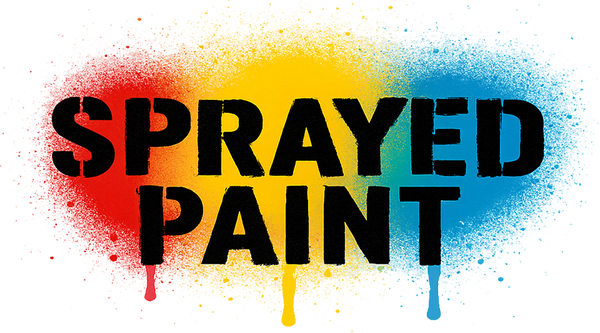
Pejac, born Silvestre Santiago in 1977 in Santander, Spain, is an internationally renowned graffiti artist known for his thought-provoking murals and street art. He developed an interest in art from a young age, and his passion led him to study Fine Arts at the University of Salamanca and then at the prestigious Accademia di Belle Arti di Milano in Italy. Throughout his artistic journey, Pejac has explored various mediums, including painting, drawing, and sculpture, but it is his street art that has garnered the most attention and admiration. Pejac's work is characterized by its unique blend of visual poetry, social commentary, and environmental consciousness. He is known for employing a wide range of techniques, including trompe l'oeil, anamorphic art, and silhouette painting, to create mesmerizing illusions and immersive experiences for the viewer. His pieces often challenge the viewers' perception of reality, transforming ordinary urban landscapes into extraordinary scenes that inspire reflection and contemplation. One of the most striking aspects of Pejac's work is his ability to convey powerful messages through simple, yet effective, imagery. His art frequently addresses social, political, and environmental issues, urging the viewer to reconsider their preconceived notions and engage in a deeper conversation about the world around them. For instance, his mural "High Hopes," painted on the side of a building in Istanbul, Turkey, depicts a group of children standing atop a hill, attempting to catch clouds with butterfly nets. This visually arresting piece serves as a commentary on the fleeting nature of innocence and the power of hope in the face of adversity. Pejac's concern for the environment is another prominent theme in his work. In 2016, he created a series of installations titled "Heavy Sea" along the Vigo estuary in Spain. The project consisted of several floating life preservers with trees growing out of them, symbolizing the fragility of our planet and the need for collective action to protect it. Similarly, his piece "Ice Scream," which features a melting ice cream cone that reveals the Earth's continents beneath it, highlights the pressing issue of climate change and its devastating effects on the planet. In addition to his captivating murals and installations, Pejac is also known for his smaller, more intimate works that he refers to as "urban interventions." These subtle yet impactful pieces often involve the alteration of existing elements within the urban landscape, such as painting over road signs or modifying tree trunks. In doing so, Pejac invites the viewer to see their surroundings from a new perspective, encouraging them to question and engage with their environment in a more meaningful way. One of the reasons Pejac's work has resonated with audiences worldwide is his ability to transcend cultural barriers and connect with people from diverse backgrounds. He has created art in numerous countries, including Spain, France, the United Kingdom, Japan, and the United States, often adapting his style and subject matter to reflect the unique characteristics of each location. This versatility, combined with his profound understanding of human emotions and the shared human experience, has allowed his art to resonate with a broad audience, making him one of the most sought-after street artists today. Pejac's work has also been exhibited in galleries and museums, allowing for a wider appreciation of his artistic talents. His first solo exhibition, titled "Redemption," took place in Paris in 2012 and showcased his intricate drawings, paintings, and sculptures. Since then, he has participated in numerous group exhibitions and solo shows, further solidifying his reputation as a versatile and innovative artist. Despite his success and recognition, Pejac remains committed to his roots in street art, using public spaces as his canvas and continuing to create thought-provoking works that spark dialogue and inspire change. His dedication to social and environmental issues, combined with his exceptional artistic skills, has earned him a loyal following and has contributed to the ongoing conversation about the role of art in society. Pejac's art not only raises awareness about pressing global issues but also encourages viewers to look beyond the surface and search for hidden meanings in their surroundings. This ability to provoke thought and stimulate reflection on the human condition is one of the reasons his work has been so widely celebrated. Moreover, Pejac's humble approach to his craft is a testament to his belief in the transformative power of art. He often chooses to remain anonymous, letting his work speak for itself, rather than seeking fame or personal recognition. This selfless attitude further underscores his commitment to using art as a means of communication and connection, rather than as a vehicle for self-promotion. In recent years, Pejac's work has continued to evolve, as he explores new techniques and delves deeper into the themes that have defined his artistic career. He has expanded his portfolio to include more large-scale installations and public artworks, while also maintaining a strong focus on smaller, personal projects. This dedication to constant growth and experimentation has kept his work fresh and relevant, ensuring that his art continues to captivate and inspire audiences across the globe. As Pejac's career progresses, it is clear that his impact on the world of street art and contemporary art, in general, will be long-lasting. His innovative approach to urban art, combined with his unwavering commitment to social and environmental issues, makes him a truly influential figure in the art world. Through his thought-provoking murals, installations, and interventions, Pejac encourages viewers to engage with their environment and reflect on the challenges we face as a global community, making his work an invaluable contribution to the ongoing discourse surrounding art, society, and the human experience.
